Real garden: explore this cottage garden with its colourful planting
With profuse planting offering a richness of colour and texture, Tessa Sale’s cottage garden in Kent is the culmination of nearly three decades of work
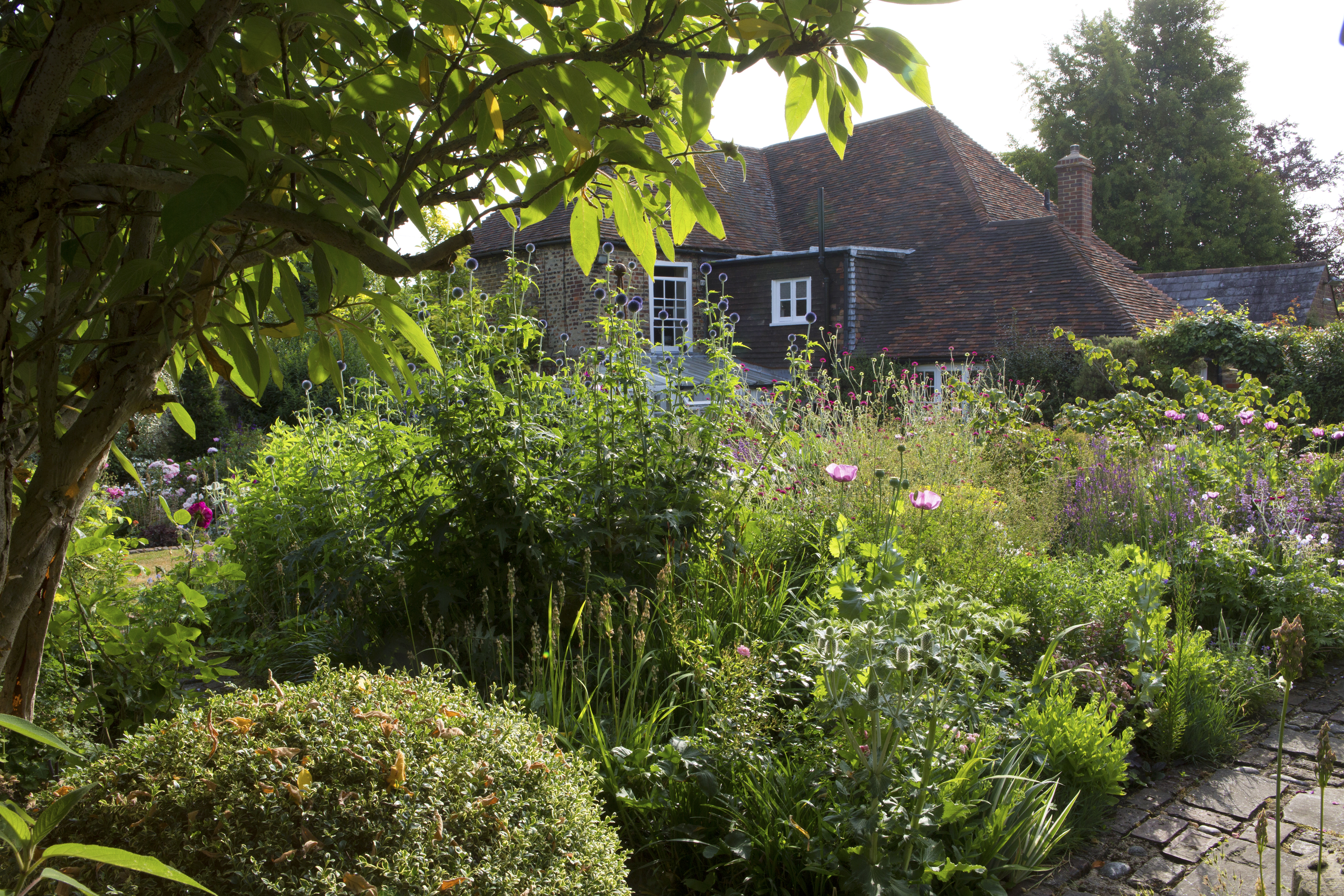
Hidden behind medieval flint and brick walls, this cottage garden in the historic village of Sandwich in Kent, is a floriferous delight, brimming with a multitude of scents and colours. Evoking the feeling that you have stepped into a secret garden, it spreads out from behind the house, divided into a pretty cottage garden jumble, and a contrasting cooler, shady area.
The garden has evolved over 29 years under the guidance of owner Tessa Sale, who moved here with her late husband, Bill.
Read on to find out how Tessa transformed the outdoor space then for more garden ideas be sure to read our feature, and to find advice on how to create your own cottage garden, we can help there too!
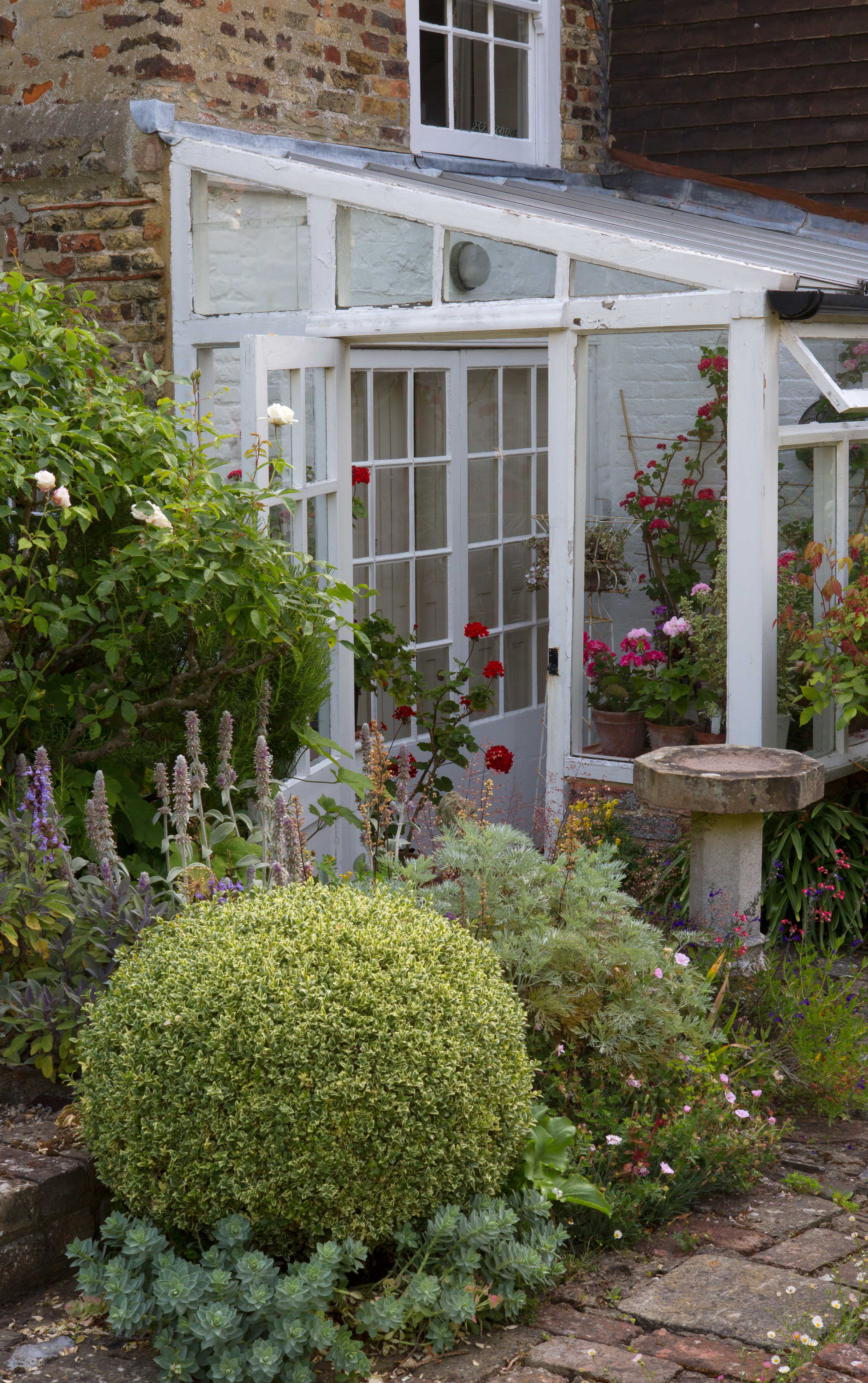
A lean-to greenhouse is the perfect place to start the abundant floral displays that fill the garden
- Check out more real home and garden transformations.
‘We knew the lady who lived here before us and we always said to her that we would love first refusal on the house if and when she wanted to sell it. Fortunately for us, Bill was retiring from his job as a live-in headmaster of a prep school at the same time that the lady was looking to move,’ says Tessa.
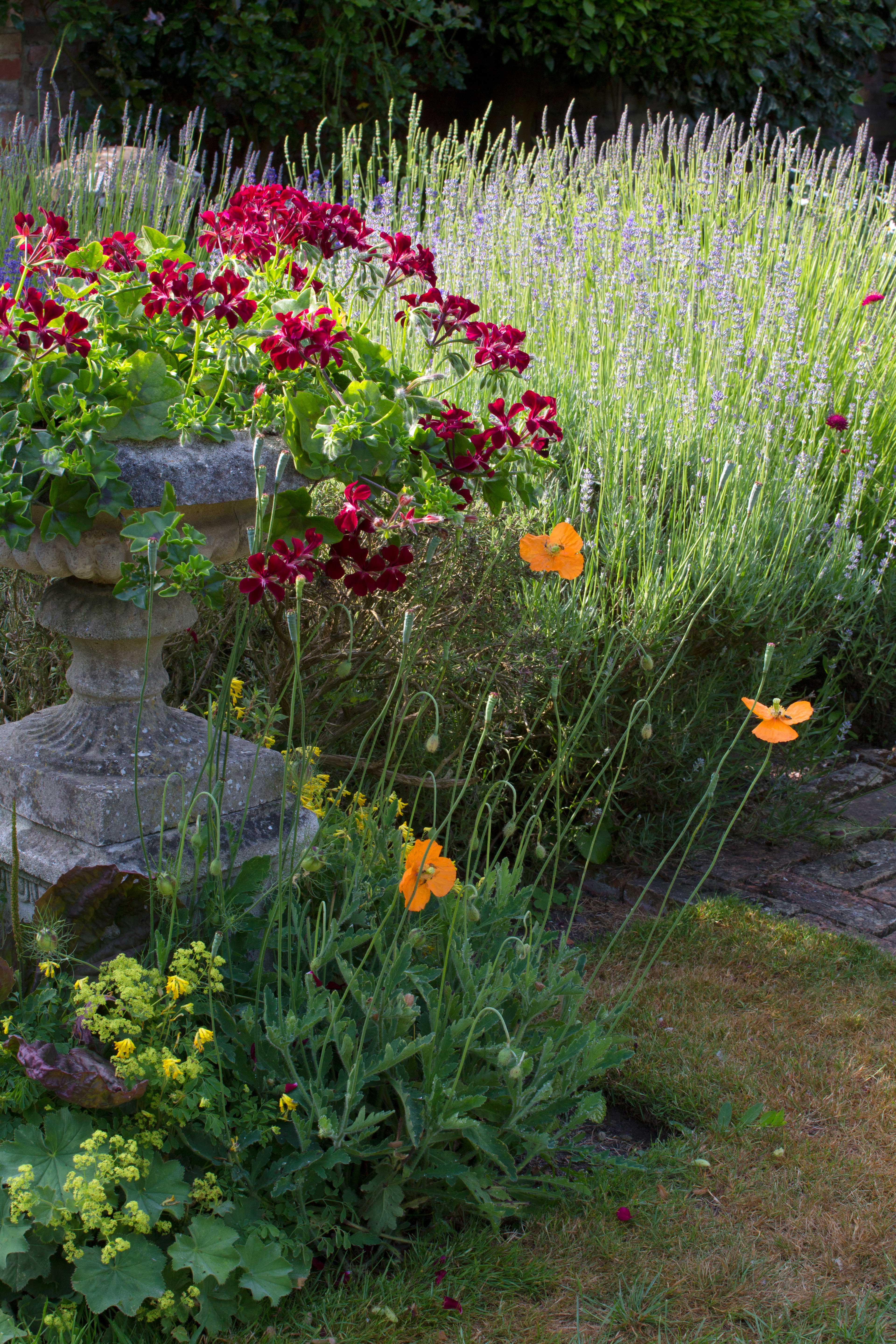
Self-seeding poppies and abundant lavender provide colour to the cottage garden
‘We loved the feeling of the house and its location in Sandwich, and for me a big attraction was the garden, which was established but in need of love and attention,’ she continues.

In the shaded back area, a small vegetable plot supplies a range of fresh produce for the kitchen
Tessa duly set to work, replanting and enriching the garden, aided by the knowledgeable gardener David Roberts, who they inherited with the property and who still helps out one day a week. ‘Together we discuss planting ideas, and try out new things in the garden each year. David does all the heavy lifting, cutting back and planting for me, which I am now unable to do on my own,’ she says.
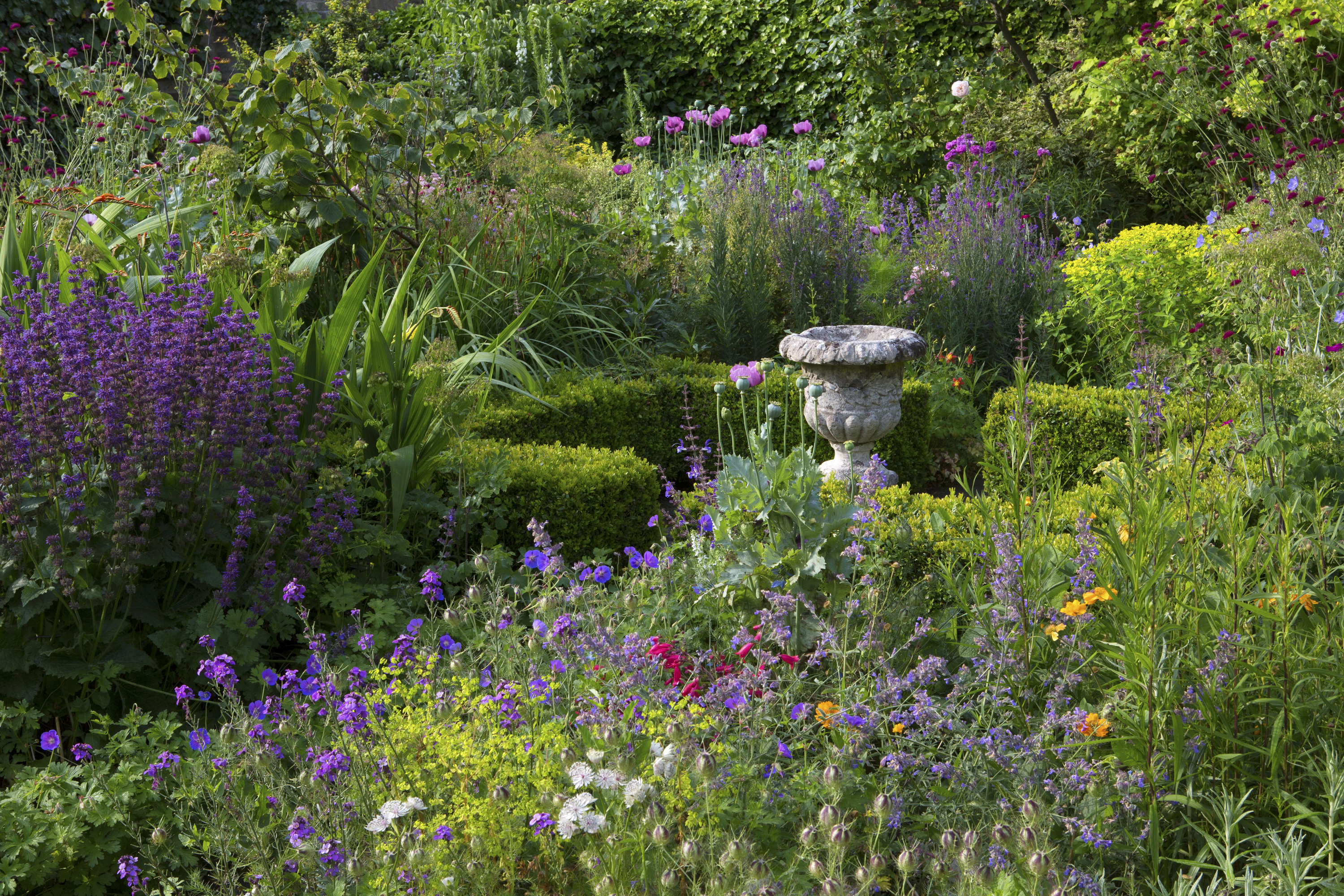
An urn framed by low buxus hedging provides a focal point among the drifts of purple salvia
A small rectangular lawn and the layout of herbaceous and rose beds were retained, but old plants were replaced, and the interwoven paths of compressed earth updated for brick walkways. ‘Today, I don’t think that there are many of the original plants left, but I have kept the feeling of the flower-heavy, cottage-style garden that I inherited all those years ago,’ Tessa explains.
Get small space home decor ideas, celeb inspiration, DIY tips and more, straight to your inbox!
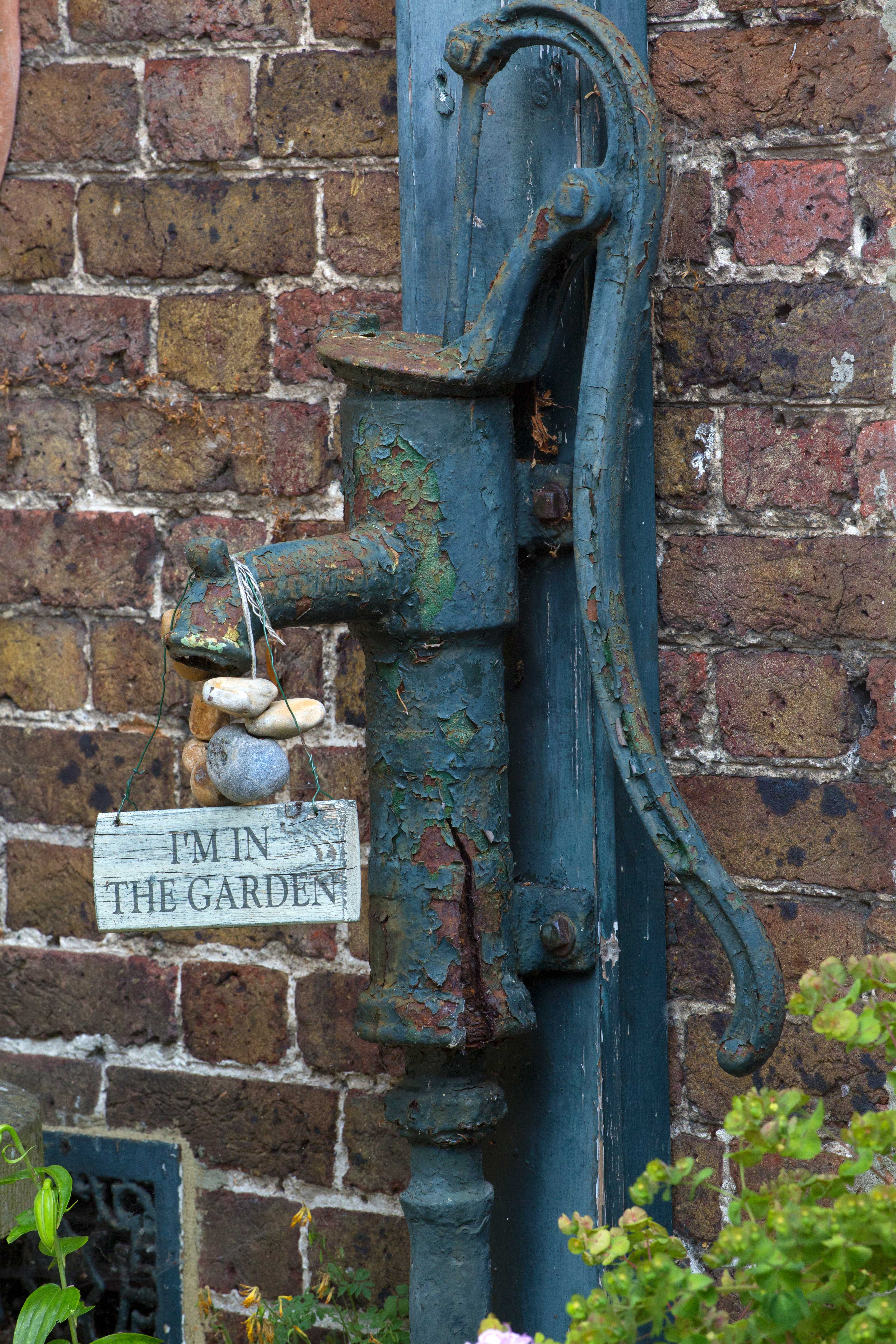
An antique water pump creates characterful point of interest, decorated with a quaint garden sign
The depth of planting provides a richness of colour and interest, which is framed by box hedges, and augmented with topiary, containers and statues dotted as focal points among the profusion. Each of the main flower beds has its own character and self-seeding is encouraged, embracing the naturalistic essence of cottage garden design.
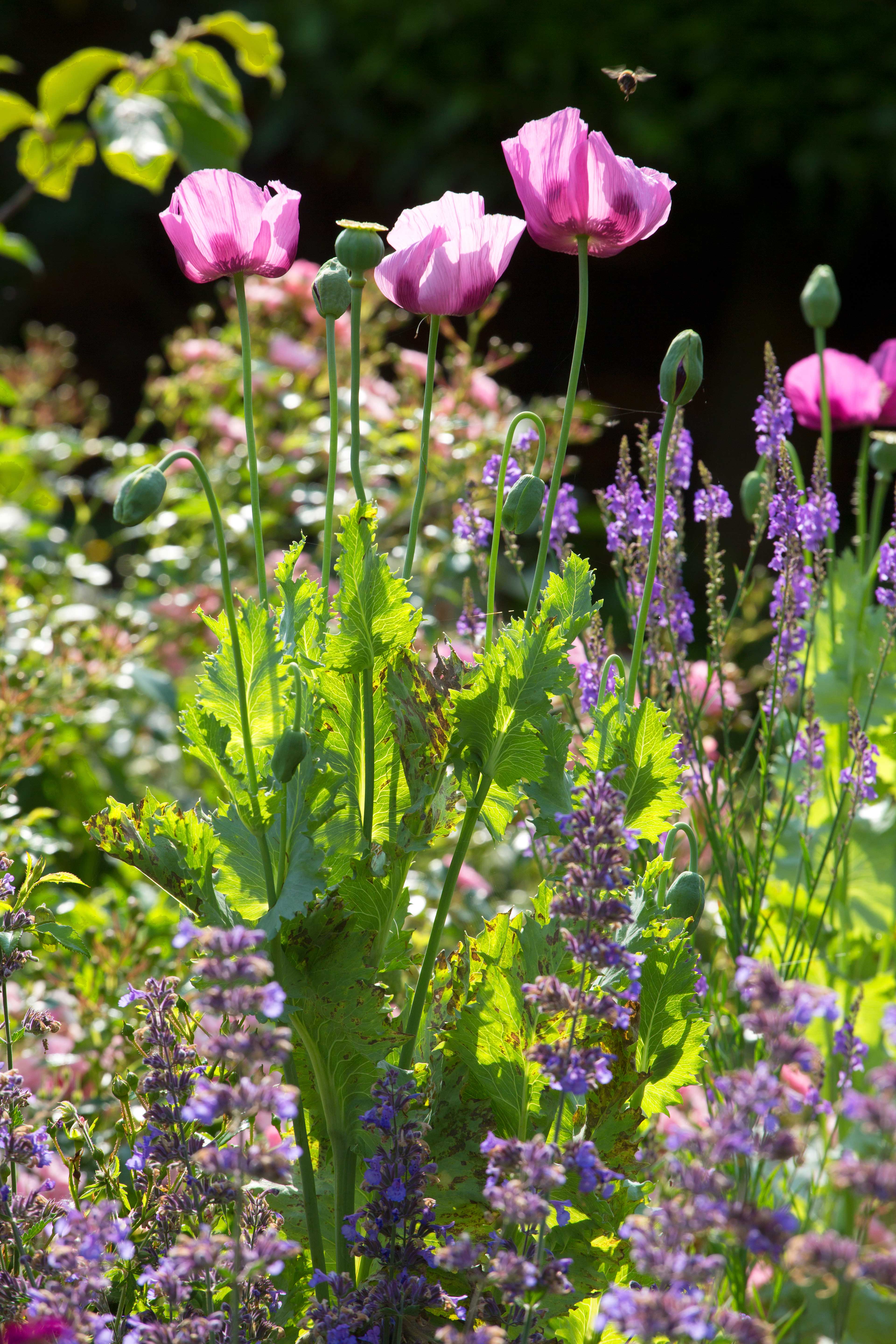
Self-seeding poppies dot the garden with their translucent pink petals, making harmonious combinations among the mauves from lavender, nepeta and salvias
‘The garden is not a weed-free area, completely in the mode of Chelsea – it’s ok to have a few weeds,’ says Tessa, smiling. Massed lavender billows in the sunshine, humming with bees; poppies stand tall among textural silvery Eryngium giganteum; and clouds of crimson scabious, Knautia macedonica, catch in the slightest breeze as you wander the paths.
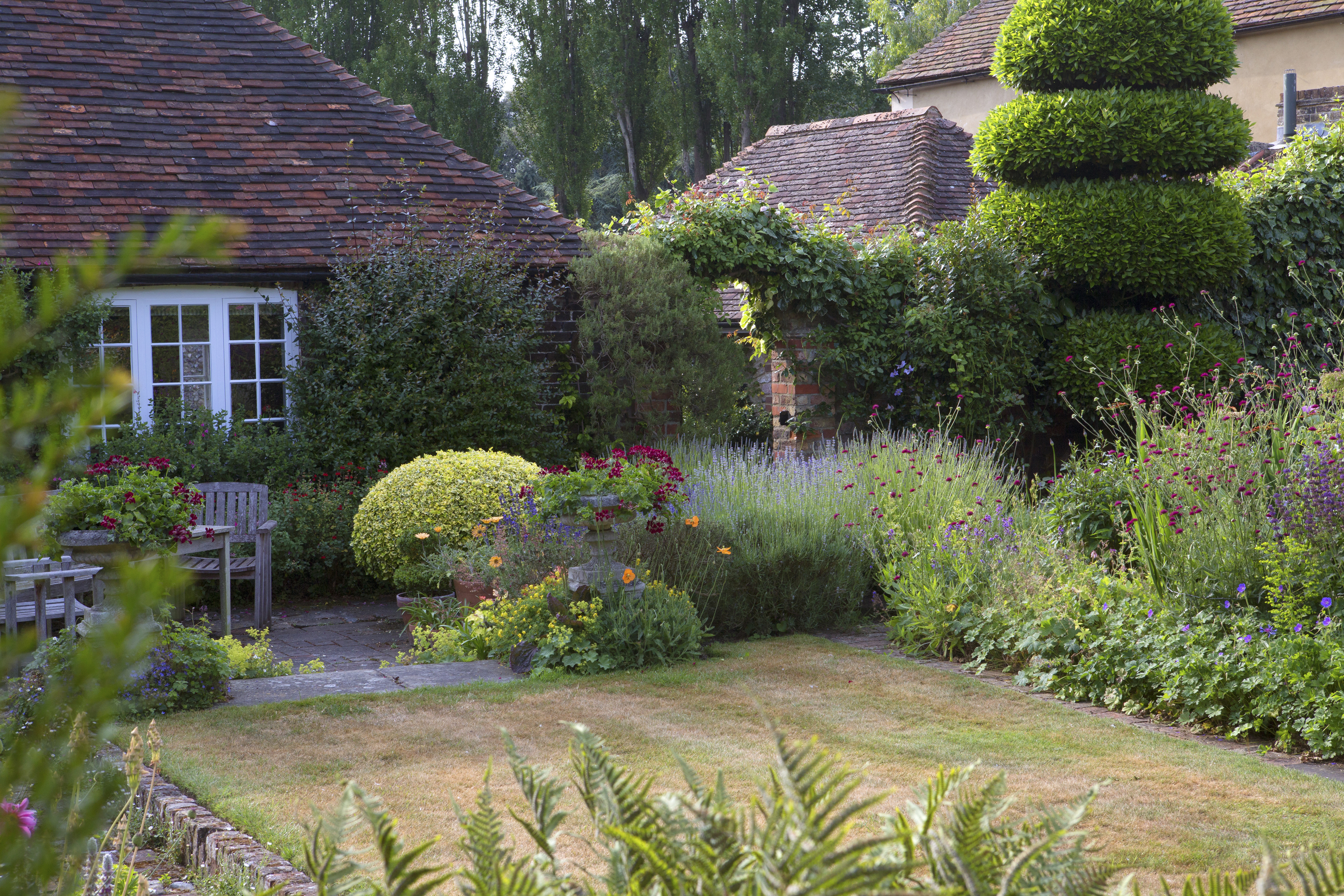
Neatly clipped topiary punctuates the beds teaming with drifts of lavender and clouds of red scabious
A mix of roses add to the medley, including reliable ‘Iceberg’, clear pink R. chinensis ‘Mutabilis’, and long-flowering Rosa x odorata ‘Bengal Crimson’. ‘All the plants have been chosen for their colour, structure, texture or scent, and I like to use complementary colours and textures throughout the garden. Now that I’m in my eighties, I don’t always remember the botanical names and tend to just buy what I like,’ Tessa says.

Deep red pelargoniums, planted in an urn, stand up well to a hot, dry summer, along with other drought-tolerant choices, such as erigeron
She has a natural artistic eye, honed since childhood, which is clearly evident with the combinations of colours, textures and forms across the garden. ‘I started my lifelong love of gardening helping my grandmother, who was a very keen gardener. All through my life flowers have been my passion – painting them, arranging them, growing them and looking at them. My aim is to have a vase of flowers from the garden on my kitchen table all year round,' says Tessa.
'Flowers still amaze me with their variety and beauty. I have never been professionally trained as a gardener, instead I have learned about plants and gardening through trial and error; my garden gives me untold pleasure,’ she beams.

Tessa places seasonal containers throughout the garden to mark the ends of paths or to create a vignette to admire
A keen visitor of gardens, she also cites Lord Rothschild’s renowned former head gardener, Sue Dickinson, as a particular inspiration, as she has helped and suggested varieties of plants, including a range of hardy Salvia microphylla varieties in pinks, purples, reds and pale yellows.
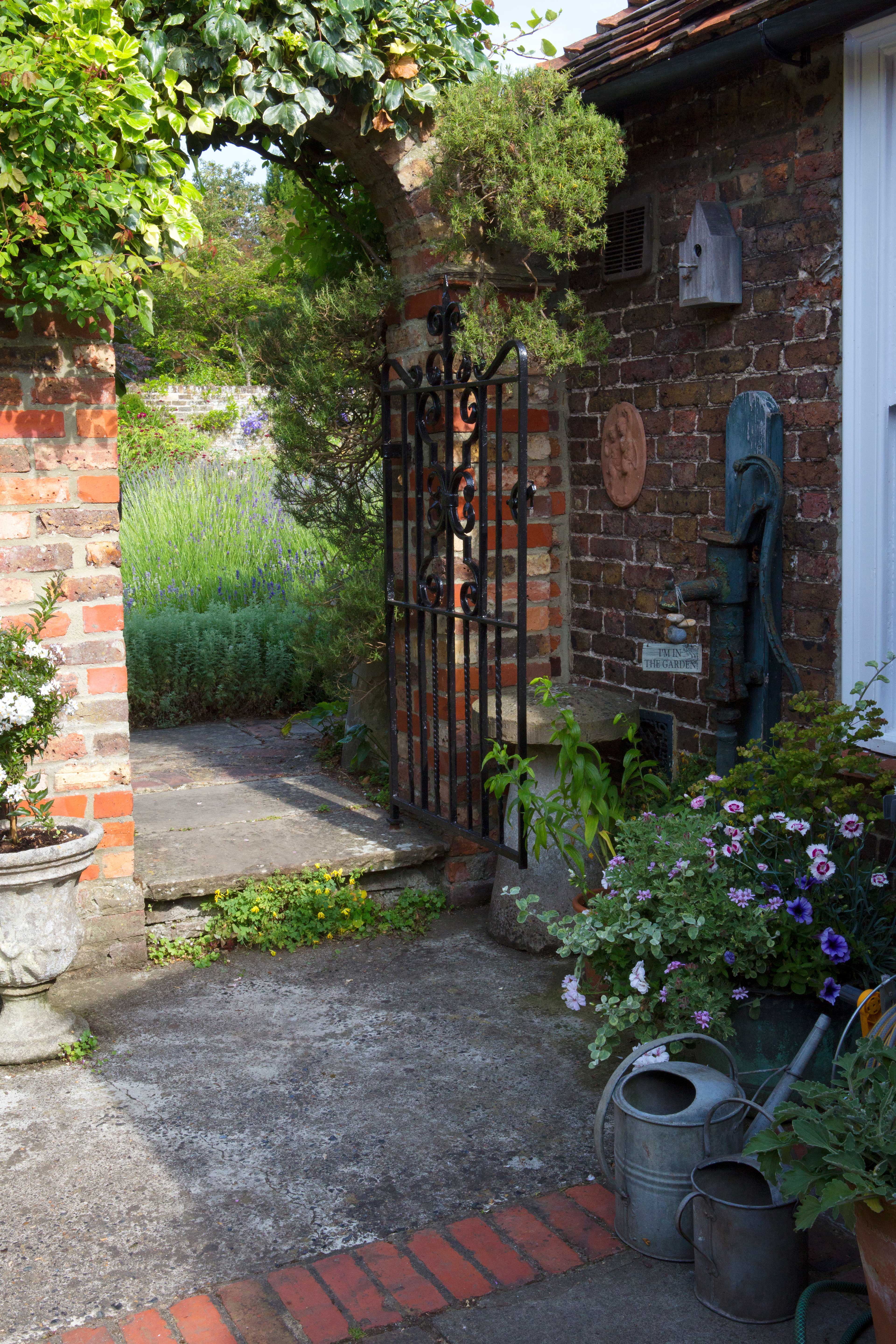
A wrought-iron gate, arched by ivy and rambling leaves provides a magical entrance to the garden
A subscription to Period Living provides you with all you need to know about caring for and improving a traditional garden – and also how to decorate, renovate and maintain a period home.
The area of the garden that presented the biggest challenge to Tessa was where footings of an old building had been, which meant there couldn’t be a garden bed. Instead, inspired by a visit to Les Jardins Agapanthe in northern France, Tessa came up with a lovely idea of a series of clipped, small box balls in neat rows, set in gravel, that make a lovely resting point for the eye against the floral and foliage effervescence.
In contrast to the colour medley of the main section of the garden, is the partially divided second area, bought ten years ago, which has an air of tranquillity. Here you can sit in the shade and listen to birdsong.
There are simpler beds of pale tones and green, a vegetable patch, plum tree, an old greenhouse and shed. In spring, carpets of different species snowdrops form a carpet under the canopy of two cherry trees, witch hazels perfume the air, and Magnolia ‘Susan’ stars before white foxgloves pop up and glow among the hostas.
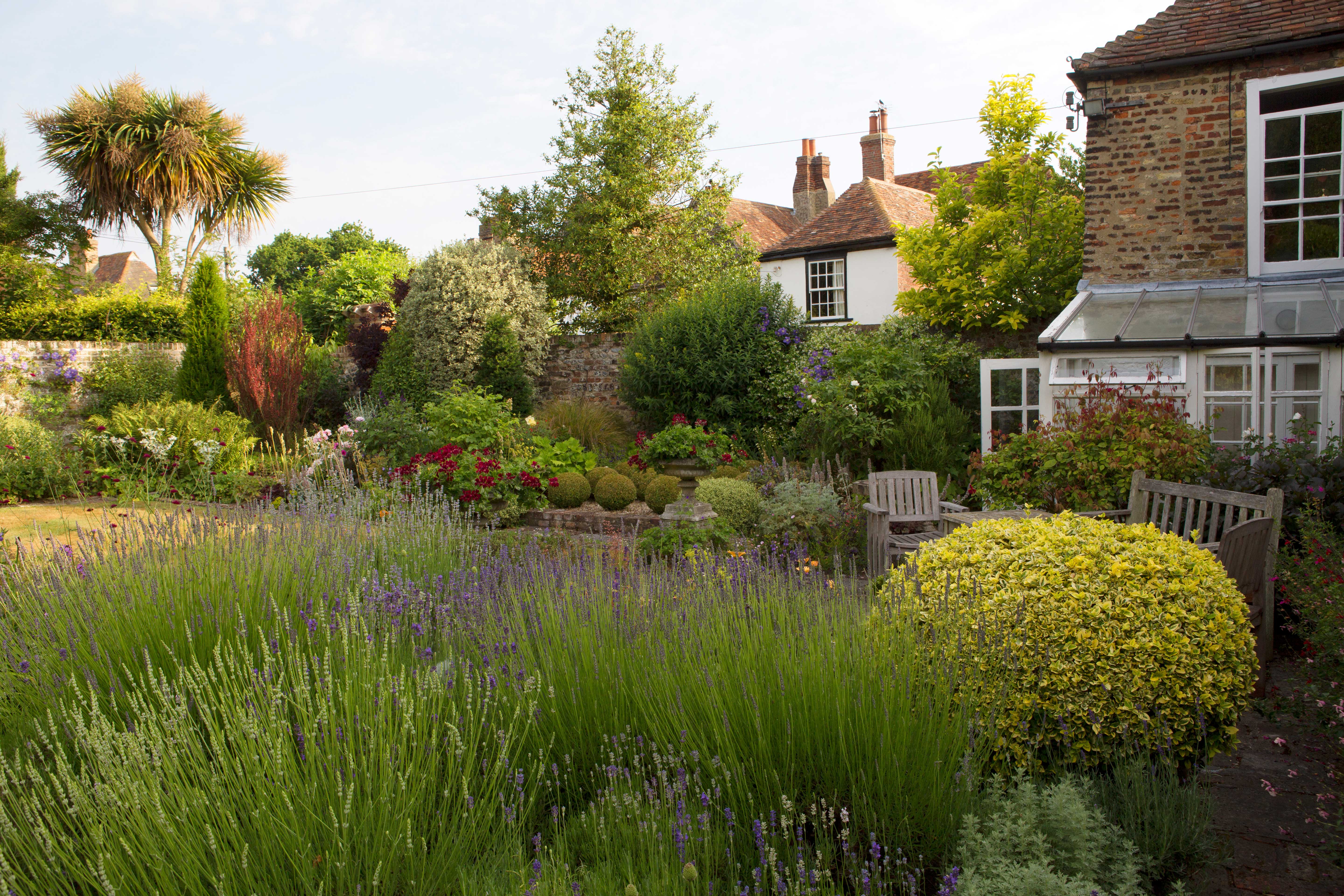
Ribbons of repeated lavender and a jumble of massed daisies catch in the breeze among the textural tapestry of planting in Tessa’s garden in the village of Sandwich, in Kent. Self-seeding is encouraged, embracing the naturalistic essence of cottage garden design
There are no significant plans for the garden, just the continuing gentle evolution for a long season of interest, from cheerful tulips offering vibrant splashes of colour in spring, to dark-leaved dahlias in bright tones in autumn. ‘I love nothing more than to wander around the garden in early summer just before the sun goes down, and see the light on the plants and experience that feeling of the garden bursting in to life,’ says Tessa. ‘Even at the end of summer, in among the dryness of the plants and earth, you still find little pockets of treasure coming up in the garden.’

The grid of buxus balls evokes a garden in the Mediterranean and offers a spot for the eye to rest and recover from the floral excess elsewhere
